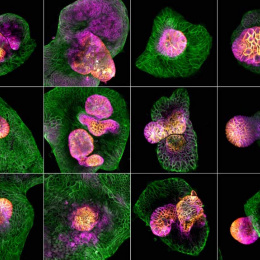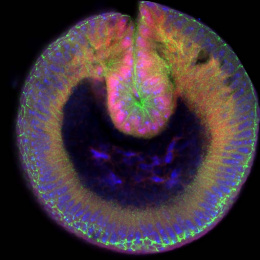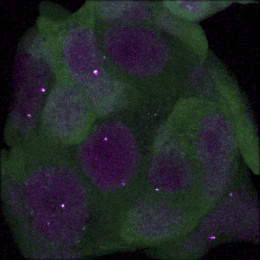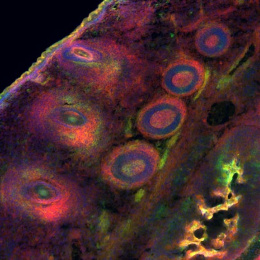Interaction of Seed Components
Interaction of Seed Components
Rebecca Povilus
Gehring Lab
Whitehead Institute
Confocal microscopy can be used to peer inside of whole seeds, letting us appreciate the hidden complexity of tissue types and cell behaviors. Multiple layers of seed coat cells enclose two distinct offspring in this seed of Arabidopsis thaliana (thale cress). On the left, a globular embryo is rooted to the seed coat with a line of cells called the suspensor. The rest of the seed interior is made of endosperm – a sibling to the embryo that mediates developmental and nutritional dynamics inside of flowering plant seeds. While the endosperm is ephemeral and does not persist past seed germination, it has a unique developmental program that involves a wide array of remarkable variations on cell biology – including nuclear division without cell division, and genome duplication within the same nucleus. In this image, you can see that a large, central multi-nucleate endosperm cell is in the process of building cell walls to carve nuclei into individual cells. On the right, a dense plug of endosperm cytoplasm and nuclei is likely acting as an important conduit to transfer nutrients from the mother to the offspring.
This image was taken to make a reference map for a project that used single-nuclei RNA sequencing to understand the full transcriptional complexity of the endosperm.






